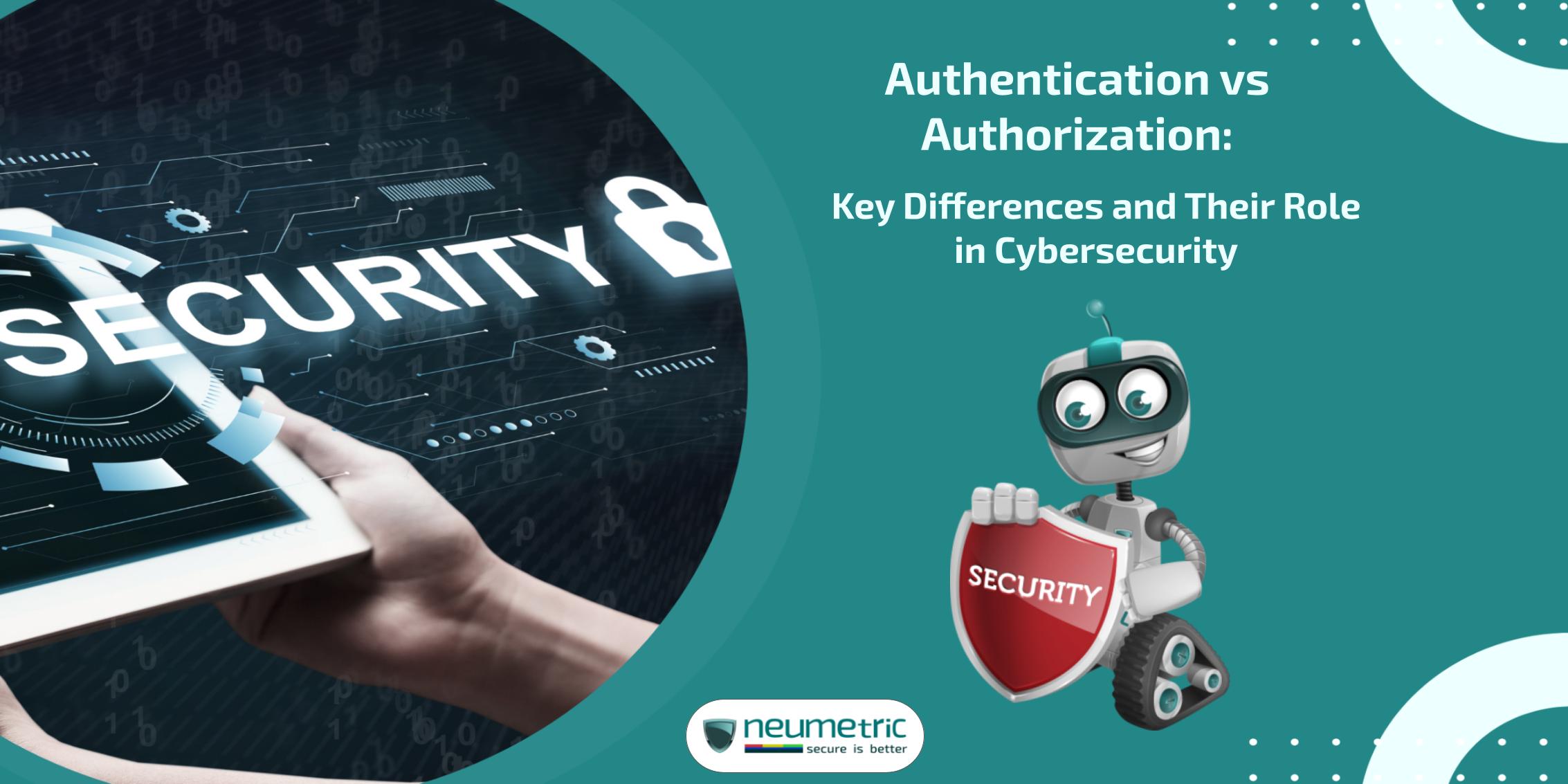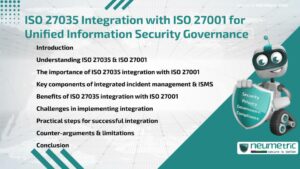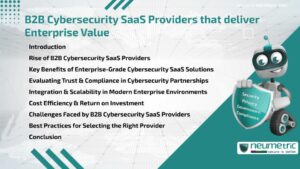Table of Contents
ToggleIntroduction
In today’s digital world, security is paramount. From online banking to social media platforms, ensuring that users have the proper access to systems & data is crucial. Two (2) critical concepts that frequently come up in discussions about digital security are authentication & authorization. Though these terms are often used interchangeably, they serve distinct purposes in the cybersecurity landscape.
In this journal, we will dive deep into the authentication vs authorization debate, clarify the differences between these two terms & explain their vital roles in cybersecurity. Understanding these concepts is essential for safeguarding sensitive information & ensuring that only the right people have access to specific resources.
What is Authentication?
Definition & Purpose
At its most basic level, authentication refers to the process of confirming a user’s identity. It ensures that the person attempting to access a system is indeed who they claim to be. This is typically done by verifying the user’s credentials, which could be something they know (like a password), something they have (like a mobile phone or security token) or something they are (like fingerprint).
The process of authentication is often compared to the act of verifying someone’s identity before allowing them into a secure location. Imagine trying to enter a bank vault or a government building: the security guard may ask for a government-issued ID or a keycard to confirm that you are who you say you are before granting you access. Similarly, in the digital world, authentication serves as the digital “key” that lets users into online services or systems.
Types of Authentication
There are various methods of authentication, each offering different levels of security & user convenience. Some of the most common methods include:
- Password-Based Authentication: A user provides a password to prove their identity. However, passwords are vulnerable to hacking methods like brute force & phishing, so many systems now combine passwords with additional security measures.
- Biometric Authentication: Biometric authentication uses unique physical traits, such as fingerprints, face recognition or retinal scans, to authenticate a user. This method is considered more secure than passwords because biometric data is difficult to replicate.
- Two-Factor Authentication [2FA]: Two-factor Authentication [2FA] is a method of adding an extra layer of security by requiring two (2) types of identification. It combines something the user knows (like a password) & something the user has (like a mobile phone or security token).
- Multi-Factor Authentication [MFA]: MFA is similar to 2FA but uses more than two (2) factors to verify the user’s identity. This could include a password, a fingerprint scan & a security token, for example.
- Behavioral Biometrics: This is an emerging method that uses behavioral patterns, such as typing speed, mouse movements & even walking patterns, to verify a user’s identity.
- Security Tokens & Smartcards: These physical devices generate One-Time Passwords [OTPs] or contain encrypted data that confirms the user’s identity. They are widely used in high-security environments, such as in corporate networks & banking.
Why Authentication Matters
Authentication is crucial because it prevents unauthorized users from accessing sensitive information, systems or networks. Without proper authentication, anyone could potentially access personal accounts, steal data or carry out malicious activities.
What is Authorization?
Definition & Role
While authentication is about identifying the user, authorization is the process of granting or denying access to specific resources or actions based on the authenticated user’s privileges or permissions. Once a user’s identity has been verified through authentication, the system then needs to determine what that user is allowed to do.
In simpler terms, authorization answers the question: “What can you do with the resources you’ve been granted access to?”
For example, consider an online banking application. Authentication ensures that the user logging into the app is indeed the account holder. After authentication, authorization determines whether the user can check their account balance, transfer money or modify personal details. A bank employee, for instance, might have access to sensitive internal tools, while a customer might only be able to view their own balance & transaction history.
Methods of Authorization
There are several methods used to manage authorization, ensuring that users can only access resources they are authorized to use. Some common methods include:
- Role-Based Access Control [RBAC]: In RBAC, permissions are assigned to specific roles & users are given access based on the role they occupy. For example, a user with an “Administrator” role might have full access to all systems, while a user with a “Guest” role might only have access to public content.
- Attribute-Based Access Control [ABAC]: ABAC uses attributes (example: user location, department, time of day, etc.) to grant access. This method is more dynamic than RBAC, as access decisions can be based on a combination of multiple attributes rather than a fixed role.
- Discretionary Access Control [DAC]: With DAC, who can access a resource (like a file or database) is determined by the owner. This method offers flexibility but can lead to inconsistencies if not managed properly.
- Mandatory Access Control [MAC]: In MAC, access to resources is governed by predefined security policies, typically in highly secure environments. Unlike DAC, permissions for resources owned by users cannot be altered.
- Context-Based Authorization: Context-based authorization involves granting or denying access based on contextual factors such as the user’s current location, the device they are using or the time of access. This method helps ensure that access is only allowed in appropriate circumstances.
Why Authorization Matters
Authorization is critical because it ensures that once a user has been authenticated, they are only allowed to access the parts of a system or data that are necessary for their role or function. Without proper authorization, users could have unrestricted access to sensitive or confidential information, increasing the likelihood of data breaches or malicious activity.
Authentication vs Authorization: Key Differences
While authentication & authorization are closely related concepts in cybersecurity, they serve distinct functions. Below is the list of the key differences:
| Parameter | Authentication | Authorization |
| Definition | Authentication involves verifying & ensuring they are who they claim to be by using the identity of the user or system. | Authorization, on the other hand, determines what permissions or resources the authenticated user is allowed to access. |
| Primary Question | The main question for authentication is, “Who are you?” It focuses on identity validation. | For authorization, the key question is, “What are you allowed to do?” It specifies the level of access & actions a user can take once authenticated. |
| Focus | Authentication is centered around identity verification, ensuring that the user is legitimate. | Authorization is concerned with permission & access levels, dictating what the authenticated user is allowed to do within the system. |
| Process Order | Authentication occurs first. The user must prove their identity before being granted access. | Authorization follows authentication. Once a user’s identity is confirmed, the system determines their level of access. |
| Methods | Authentication methods include passwords, biometrics (fingerprints, facial recognition), security tokens & other means of identity validation. | Authorization methods often involve Role-Based Access Control [RBAC], Attribute-Based Access Control [ABAC] or Discretionary Access Control [DAC], all of which define what the authenticated user can or cannot do. |
| Scope | The scope of authentication is to validate the user’s identity—confirming they are who they say they are. | The scope of authorization is to define what the user is permitted to do once their identity is authenticated. |
| Goal | The goal of authentication is to ensure the authenticity of the user & prevent unauthorized access. | The goal of authorization is to manage access levels & control what authenticated users can access or perform within a system. |
By understanding these distinctions, it becomes clear that while authentication ensures that the right person is accessing the system, authorization governs what that person is allowed to do once inside. Both are integral to a robust security framework.
Why Authentication & Authorization are Both Crucial for Cybersecurity
Both authentication & authorization are critical components of an organization’s cybersecurity framework. Without authentication, unauthorized users could easily gain access to systems, compromising data integrity & security. Without authorization, even legitimate users could have unrestricted access to sensitive information or systems, increasing the risk of misuse or data breaches.
Think of a bank vault. Authentication is the process of confirming that you are the right person to open it (using a key, a combination or a biometric scan). Once the vault is opened, authorization determines whether you have the right to access the contents inside. Without both, the vault would either be vulnerable to intruders or allow unauthorized access to sensitive contents.
Cybersecurity Risks of Inadequate Authentication & Authorization
The absence or weakness of either authentication or authorization can lead to significant security breaches. Some of the risks include:
- Unauthorized Data Access: Without proper authorization controls, users could gain access to sensitive data they shouldn’t be able to see.
- Identity Theft: Poor authentication practices, such as weak passwords, make it easier for attackers to impersonate users & steal valuable information.
- Privilege Escalation: Improper authorization can allow users to gain access to higher privileges, enabling them to perform actions that should be restricted, such as deleting critical files or manipulating user data.
Common Methods of Authentication
Password-Based Authentication
Passwords remain the most widely used method of authentication. While they are convenient, they are vulnerable to attacks such as brute-force, phishing & credential stuffing. Organizations are increasingly implementing Multi-Factor Authentication [MFA], which combines something you know (password) with something you have (a mobile device for receiving a security code).
Biometric Authentication
Biometric methods are more secure than traditional passwords. Fingerprints, facial recognition & retina scans are becoming standard for personal devices & secure facilities. However, biometric data is not foolproof & raises privacy concerns.
Security Tokens & Smartcards
Security tokens generate one-time passcodes, while smartcards contain encrypted data that confirms the user’s identity. These methods are commonly used in highly secure environments, such as corporate networks & financial institutions.
Common Methods of Authorization
Role-Based Access Control [RBAC]
RBAC is a popular method for managing access based on the user’s role within an organization. It’s easy to implement & manage but can be rigid, especially in dynamic environments.
Attribute-Based Access Control [ABAC]
ABAC is a more flexible approach where access decisions are made based on user attributes. For example, a user’s location, time of access or department may influence their level of access.
Discretionary Access Control [DAC]
DAC allows the resource owner to decide who gets access to what. This is typically used in smaller, more flexible environments but can be less secure in large, complex systems.
How Authentication & Authorization Work Together
For a secure system, authentication & authorization must work hand in hand. Here’s how the process typically unfolds:
- Authentication: The user provides their credentials (example: username & password) to prove their identity.
- Authorization: After authentication, the system checks the user’s role & permissions to determine what resources they are allowed to access.
- Access Granting: If both authentication & authorization are successful, the user is granted access to the specified resources.
Without both layers, a system’s security would be incomplete & vulnerable to threats.
Challenges in Authentication vs Authorization
While both authentication & authorization are vital to security, there are challenges:
- Password Management: Weak or reused passwords are common vulnerabilities & users often struggle to create strong, unique passwords.
- Scalability: As organizations grow, managing authentication & authorization for many users can become cumbersome, especially when permissions need to be updated frequently.
- Privacy Concerns: Biometric authentication methods raise concerns over privacy & data protection, especially if biometric data is stored in central databases.
Conclusion
In the debate of authentication vs authorization, both processes are essential for cybersecurity. Authentication ensures that the user is who they claim to be, while authorization dictates what actions they are allowed to perform. Together, these two layers of security provide the foundation for safe & secure digital interactions, protecting both sensitive data & systems from unauthorized access.
Key Takeaways
- Authentication & authorization are distinct but complementary processes in cybersecurity.
- Authentication verifies the identity of users, while authorization defines their access levels.
- Both are essential for maintaining security, protecting data & ensuring that users only access resources they are permitted to.
- Common authentication methods include passwords, biometrics & security tokens, while common authorization methods include role-based & attribute-based access controls.
Frequently Asked Questions [FAQ]
What is the main difference between authentication & authorization?
Authentication is the process of verifying a user’s identity, while authorization determines what actions that authenticated user is allowed to perform.
Can a system have authentication without authorization?
Yes, a system can authenticate users without authorizing them to perform any actions. However, this would leave the system vulnerable to unauthorized access.
Why is multi-factor authentication [MFA] important?
Using multiple forms of verification MFA adds an additional layer of security which makes it harder for attackers to gain access using only a password.
What are some common risks associated with poor authentication practices?
Poor authentication practices can lead to identity theft, unauthorized access & data breaches.
Can authorization work without authentication?
No, authorization typically occurs after authentication. Without confirming the user’s identity, the system cannot decide what they should be authorized to do.





